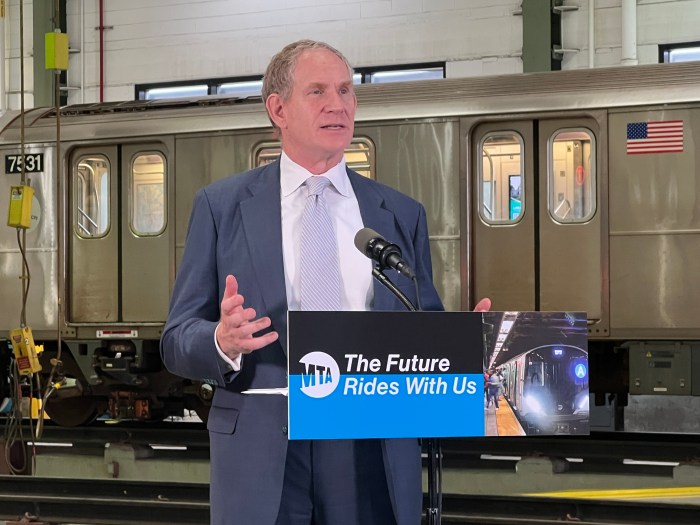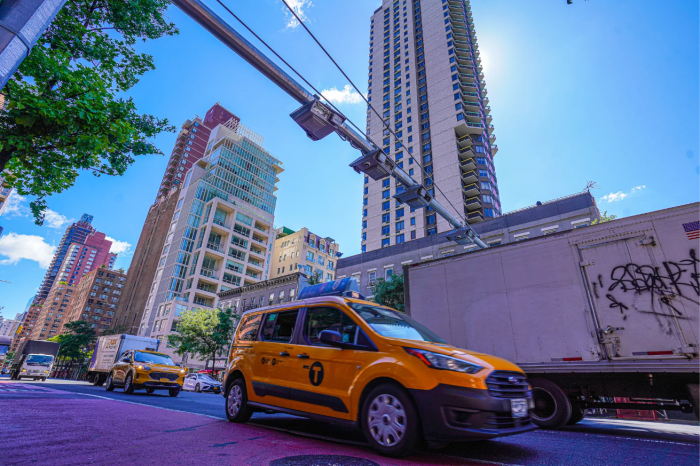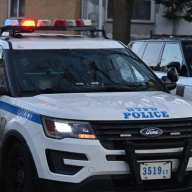
Congestion pricing can have a tangible impact on traffic and emissions in New York City, but it’s not a cure-all for the MTA, experts and officials warn.
Gov. Andrew Cuomo has pledged to unveil details about his forthcoming congestion pricing plan in his State of the State address next year as a means to provide a new source of revenue for a beleaguered transit agency that has experienced soaring subway delays and increasingly slow, unreliable bus service.
“I think all the informed professionals will say Manhattan is perfectly suited for [a] congestion pricing model … [it’s] an exclusive zone where frankly you’re trying to discourage the traffic from coming in and you want to encourage mass transit,” Cuomo told reporters in Rochester on Tuesday. “Also we need a funding stream for the MTA downstate subway system in New York City, which has been underfunded for decades.”
Cuomo’s endorsement of congestion pricing earlier this month came swiftly after Mayor Bill de Blasio pitched a millionaires’ tax to Albany as a “fair” initiative to pay for MTA fixes. De Blasio believes implementing congestion pricing will be “inconceivable” — in part because it won’t find support in Albany, but also because he feels it unduly burdens outer boroughs.
Without any information on Cuomo’s plan, state lawmakers have remained relatively mum.
“There is no real proposal,” said Scott Reif, a spokesman for Senate Majority Leader John Flanagan of Long Island. “If the governor intends to put something forward at the beginning of next year, we’ll take a look at it then. We’ve been clear that we want to bring about lower taxes, lower fees, lower costs of living throughout the state. Affordability is one of the things holding us back.”
Queens Assemb. Nily Rozic expressed concerns that raised revenue from new tolls won’t necessarily translate into transit improvements for her constituents.
“We need to know a lot more about the plan before even saying ‘yes’ or ‘no,’ ” Rozic said. “Bottom line is we need revenue and we need assurances that mass transit will be improved in the outer reaches of Queens or Brooklyn or the Bronx. Until we see a credible plan that will improve mass transit for straphangers and riders in Queens, we can’t keep paying out of our pocket.”
And increased revenue won’t address the high costs of MTA construction that City Council members Helen Rosenthal and Ydanis Rodriguez criticized in a City & State opinion piece published Monday. At $4.5 billion, experts believe the first phase of the Second Avenue subway was the most expensive subway project ever built.
“We know that New York is an old city,” the two officials wrote. “Its layers and layers of infrastructure [slows] projects and balloons budgets. But cities like London, Paris and Madrid are spending way less to expand and modernize their systems, and compared to those aging metropolises, we’re a city still well in our youth.”
But as the city has grown, many believe congestion pricing can alleviate traffic that has crawled to a halt and reduce the steadily increasing volume of greenhouse gases being emitted on the streets.
Traffic speeds in Manhattan south of 60th Street have fallen 12 percent between 2010 and 2015 from 9.35 miles per hour to 8.21 miles per hour, according to one city report. Meanwhile, the percent of greenhouse gas emissions from city transportation has increased from 21 percent to 30 percent during the same time period, according to another.
Nilda Mesa, the former director of the Mayor’s Office of Sustainability who now heads the Columbia University Earth Institute’s Urban Sustainability and Equity Planning program, said in an email that it’s time for New York to “do the hard work” necessary to implement a successful congestion pricing model.
“Some of the city’s worst air quality, if not the worst, is in midtown Manhattan. One of the major sources of smog and pollution is from vehicles,” Mesa said. “If done right, you would see mobility improve, carbon emissions that contribute to climate change cut, and better air quality for New Yorkers.”
Lawmakers should study and pull the best practices from other cities that have tried their hands at the concept — like London, Stockholm, Oslo and Singapore — and pull what has worked and could fit in New York, Mesa said. A successful approach, she added, would also require extensive public outreach and transportation planning to ensure that commuters have reasonable options to leave their cars behind.
Along the way there will be plenty of thorny issues, like how congestion pricing would relate to the taxi and for-hire vehicle industry.
“It’s a really different world today than when [former Mayor] Bloomberg introduced his plan,” said Bhairavi Desai, executive director of the New York Taxi Workers Alliance, referring to Bloomberg’s failed attempt to implement congestion pricing nearly a decade ago. “We would like to be open to the argument that less private cars all around would mean motorists would be more likely to take a taxi or for-hire-vehicles. But it seems like a Band-Aid solution when there is an unlimited number of for-hire vehicles on city streets.”
Reframing the argument, Mesa considered the city’s current tolling structure to be essentially a failed form of congestion pricing. For instance, the four East River bridges, operated by the city, remain toll-free. But those areas are far better-served by mass transit than neighborhoods surrounding the MTA’s tolled outer-borough bridges, like the Verrazano or Bronx-Whitestone bridges.
“The fact of the matter is — we already have congestion pricing, only the pricing does not correspond to the congestion,” she said. “We already pay for the delays in getting around the city, carbon emissions, and air quality.”

































